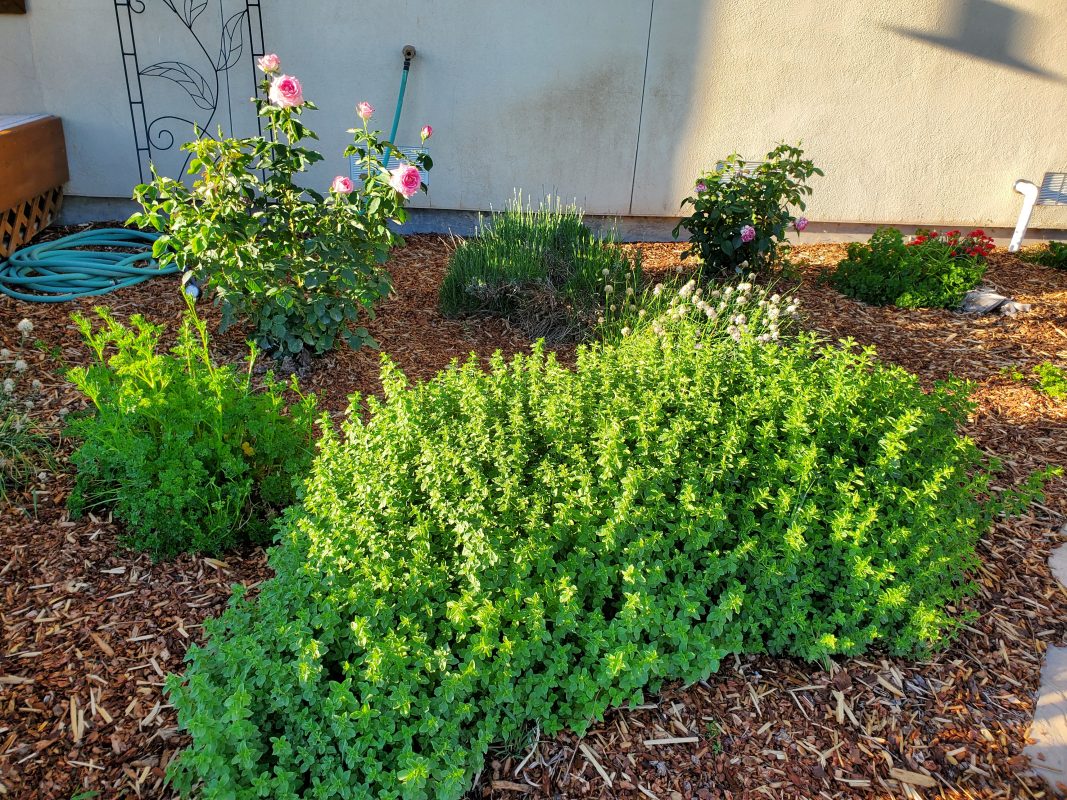One of the easiest things you can do to help you garden successfully during a dry year is to simply add a layer of mulch once you’ve finished planting.
Mulches do a great deal more in your yard other than just improve its appearance. The biggest benefit of a good layer of mulch is that it will help to retain moisture and this year that will be very important as we all work to use every drop wisely. Think of it as a blanket for your plants but one that is super effective, especially when added over a layer of weed barrier. Together they’ll work to keep the moisture from evaporating and in the ground near the roots of plants once you’re watered.
The other big benefit is that a layer of mulch over a layer of weed barrier almost bullet proofs your garden against weeds. You’ll notice I said “almost” because there is always that persistent weed or two that will root and take hold, but overall it’s pretty effective and will eliminate most of your weeding chores. Weeds compete with your desirable plants for whatever water is available, so it is especially important to use it this year. We have a pretty big garden and using both of these has made it possible to weed the entire place in about 15 minutes each week.
There are many types of mulch and which you choose depends on what you are trying to accomplish in your garden. You’ll want to apply most mulches to a depth of 1-2″ in order for them to be effective.
Materials like river rock, lava rock, or stone are available in a variety of sizes and colors and make a nice finish and can blend in well with the landscape particularly if you favor rock gardens in your yard. The advantages of mulches of this type is that they are long lasting and heavy which helps to hold down the landscape fabric on which they are usually placed. Depending on the quality of the weed barrier fabric you purchase, an application of weed barrier with stone or rock on top can last 10-20 years. Best of all, they are not likely to blow away in our strong winds.
The disadvantage is that the stone will hold heat and if you have something like snapdragons that throw seeds nearby, it can be next to impossible to keep those seeds from taking hold in the cracks once dirt particles begin to drift in. Other materials like shredded rubber tires are available but I don’t recommend them for the same reason- they will be hold heat and be hot around your home.
Personally, I favor organic mulches like bark which are available as chips, ground, or in shredded form. Bark is what I use in my home garden but compost, straw, hay or other organic materials are also suitable. It’s natural looking and blends well in my landscape and I love the smell when a new layer has been added, especially if we’ve used shredded red cedar.
The benefit to using bark mulches is that they will decompose and over time this decomposition is terrific for your garden in our heavy clay soils. The decomposed bark adds badly needed organic matter and nutrients and helps to loosen and aerate the soil. After 23 years in our house, my soil is nice to plant in, largely because of all the bark we’ve applied over the years.
At the same time, the downside to using mulch of these types is that they will eventually lose their color and even though you want that decomposition to improve your soil, it means eventually it disappears, so it may need to be replenished every year or two. Another downside is that these mulches can rob your plants roots of nitrogen as they decompose so plan on adding a high nitrogen fertilizer regularly throughout the growing season to combat this process.
A good layer of mulch is a quick and easy way to help conserve water wisely and make every drop count while keeping your garden looking great and producing the vegetables you need for your family dinner table.

